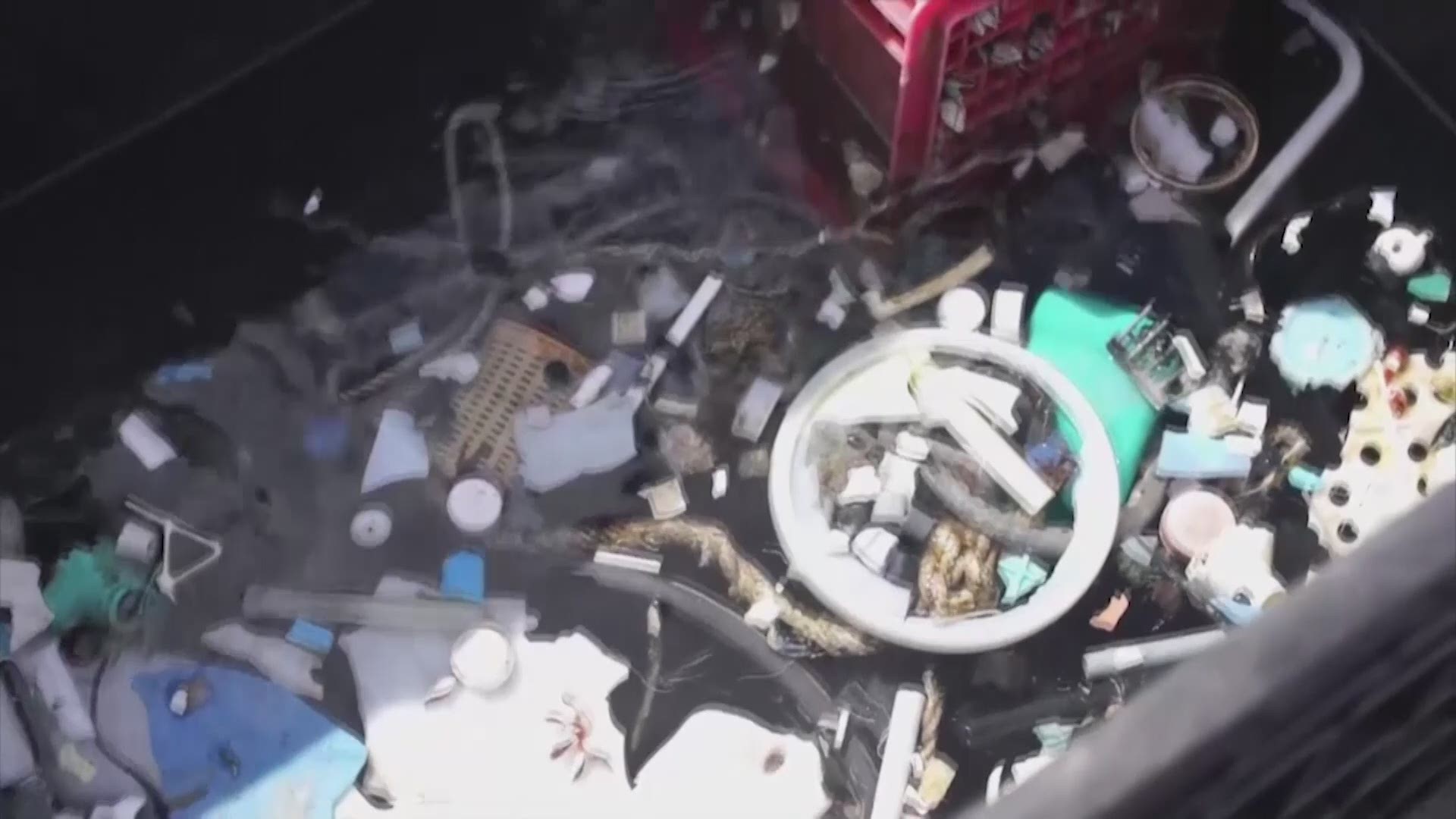GALVESTON — You might have seen the footage: tons of trash, washing ashore across beaches worldwide—from the Dominican Republic to the Philippines, to India.
All of that trash is impacting wildlife — they're confusing it for food and then eating countless amounts of plastic. And guess where that plastic is ending up? On your dinner plate.
The Galveston Parks Board Data reported there were more than a million pounds of trash picked up on our beaches in 2016. In 2017, more than 2 million pounds were collected. Take a walk on our beaches, and you'll find bottles of water, burger wrappers, and cigarette butts scattered across the sand.
Joanie Steinhaus, the program director with the Turtle Island Restoration Network in Galveston, works with her team to protect endangered marine species—especially the state sea turtle, the Kemp’s Ridley. She has seen the devastating effects of trash on our turtle population.
She told KHOU a volunteer was on a short walk from 61st Street to The Pleasure Pier and picked up more than 1,200 cigarette butts. Another volunteer found 253 empty tent frames in a 12-mile stretch of the West End of Galveston, with even more debris scattered through them. A lot of this trash, along with plastics from off-shore rigs or vessels out in the gulf, will end up in our waterways and be consumed by marine wildlife.
But cigarette butts are not the only concern. Fishing lines, balloons, and ribbon are also causing harm. Balloons break down due to the heat from the sun, causing them to photodegrade. If they've shriveled up and ended up in our oceans, they look like jellyfish.
“[Eating trash is going] to weaken them and make them more susceptible to predators because they don’t have the nutrients," Steinhaus said. "They didn't eat the crabs and the fish and the other things that they should be eating, they’re full of plastic.”
It’s not just the larger pieces of plastic threatening marine wildlife, it’s small pieces of plastic referred to as “nurdles”—tiny pieces of plastic manufactured, similar in size to what you’d find inside of Beanie Babies.
“All these little ... diamond shapes that you’re seeing are actually turtle bites,” Steinhaus said. “And so, we know turtles are ingesting this plastic.”
After the fish have eaten those organisms, we end up eating the fish who’ve eaten those smaller organisms that have eaten the plastic.
MICROPLASTICS AND YOU
A study in 2017 shows that 94 percent of tap water in the United States has microfibers in it. So, you’re not only eating microplastics, you’re drinking them as well. Researchers said that adds up to more than 13,000 pieces and up to 68,000 pieces of consumed microplastics a year.
“When you go to the beach, it’s very easy to see larger items, to see the big bag floating across the beach or you get entangled in the large fishing line,” said Theresa Morris, program coordinator with TIRN. “But you don’t realize that all this stuff is breaking down into these tiny pieces and you’re actually walking around and swimming in it.”
According to TIRN, Texas is the number one coastal state with the most pounds of trash per mile. Morris said our area is in a watershed, meaning trash from as far as Dallas eventually gets washed down to us. Locally, Morris and other researchers tested samples of our beach sand to look at the number of microplastics on our beaches. They found 800 pieces of plastic in just three gallons of sand.
“That’s an amazingly large quantity of plastic in one small size of sand,” Morris said. “One of the reasons why it’s important to look and see what kind of microplastics are in our area is because if we know what kind of plastic is there, then we can figure out what the source is and come up with ways to eliminate it from the environment.”
WHAT YOU CAN DO
There are a number of things you can do to help marine wildlife.
“Simple things, saying no to straws, saying no to single-use water bottles, bringing in your own coffee cup when you go to the coffee house,” Steinhaus said. “Never releasing a balloon again would have a huge impact. Any plastic product that you touch has a very short lifespan and is potentially ending up in a landfill and a lot of it, we’re learning, is ending up in the ocean.”

